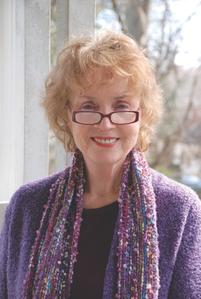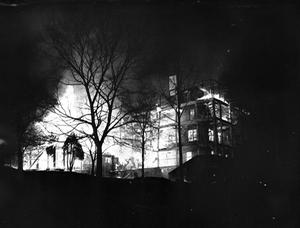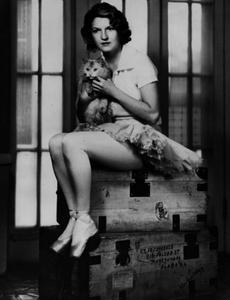 Lee Smith (Oral History, The Last Girls) has published 12 novels and four collections of short stories. She is a recipient of the Academy Award in Literature from the American Academy of Arts and Letters, the North Carolina Award for Literature, and a Southern Book Critics Circle Award. Smith lives in Hillsborough, N.C.
Lee Smith (Oral History, The Last Girls) has published 12 novels and four collections of short stories. She is a recipient of the Academy Award in Literature from the American Academy of Arts and Letters, the North Carolina Award for Literature, and a Southern Book Critics Circle Award. Smith lives in Hillsborough, N.C.
Your depiction of Highland Hospital is so vivid and compelling. How much of this depiction came from research and how much from imagination?
I spent years researching this book. For details of daily life at the hospital, I am especially grateful to the special collections and archives at the University of North Carolina. Though actual patient records are not available, letters, clippings, memorabilia and the many various Highland Hospital publications over the years proved invaluable to me in gaining a sense of hospital life during the years covered in my novel, 1936 to 1948. Here I found catalogues, brochures, programs of events such as concerts, dances and celebrations of all kinds, the Highland Highlights magazine and the wonderful Highland Fling newspaper published by the patients. Zelda Fitzgerald's own letters, both published and unpublished, are remarkable. I interviewed everybody I could get my hands on with any firsthand, pertinent knowledge, such as Mary Caldwell, medical ethicist and lifelong Asheville resident with early work experience at Highland Hospital; older psychiatrists, nurses and townspeople; and others such as Mrs. Scott Hill of Durham, N.C., who was a piano student of Mrs. Carroll throughout her youth in Asheville. Once I had a real sense of life lived within this institution, I could let my imagination go, and release my own characters to walk the hospital halls, participate in the musical events and climb those lovely slopes up to the stately buildings on top of the mountain.
 It is also true that I have my own personal knowledge of the landscape of this novel. Both my parents suffered from mental illness, and my father was a patient at Highland in the 1950s. My beloved son Josh spent several helpful years there in the late 1980s, in both inpatient and outpatient situations, as he battled schizophrenia. During that time, I came to know the hospital like the back of my hand. And though I had always been interested in Zelda Fitzgerald, it was during those years that I became fascinated with her art and her life within that institution, and by the still-unsolved mystery of her awful death.
It is also true that I have my own personal knowledge of the landscape of this novel. Both my parents suffered from mental illness, and my father was a patient at Highland in the 1950s. My beloved son Josh spent several helpful years there in the late 1980s, in both inpatient and outpatient situations, as he battled schizophrenia. During that time, I came to know the hospital like the back of my hand. And though I had always been interested in Zelda Fitzgerald, it was during those years that I became fascinated with her art and her life within that institution, and by the still-unsolved mystery of her awful death.
Do you think in the 1940s, creative and even extraordinary women were likely to be diagnosed as "mad?"
Absolutely! Creativity--especially genius--is always "outside the box." It can make people uncomfortable, even scare them. It was often easier to diagnose a brilliant woman as "crazy" than to actually listen to what she had to say. In the past, many female patients were committed simply because they did not conform to what was expected of a woman in her time and place. The truth of the time is chilling... if you had enough money and your wife insisted upon being way out of line, you could always "send her away" for a course of helpful shock treatments and "re-education" as to her correct role as a dutiful wife and mother. For more serious cases, such as overly promiscuous young women, especially those who were black or from a lower class, the court might send them to a facility for sterilization or even a lobotomy.
 Do you think F. Scott Fitzgerald was guilty of suppressing his wife's creativity?
Do you think F. Scott Fitzgerald was guilty of suppressing his wife's creativity?
The easy answer is "yes," but the truth, I believe, was infinitely more complicated. For starters, Zelda was first and foremost a product and victim of the deep South's "belle" system, which decreed that she spend her teen years primping, dancing, flirting with and fascinating as many boys as possible--often simultaneously. Frequently she had as many as six dates in an evening. Wild, zany Zelda fit the belle role to a T, amplifying it with her own daring and sexual boldness. She met the ambitious young writer F. Scott Fitzgerald at the Beauty Ball in Montgomery when she was only 17 years old; he was a soldier stationed nearby. They married two years later, after his novel This Side of Paradise came out, then threw themselves (literally) into a wild lifestyle for which the untravelled and uneducated Zelda was woefully unprepared. They lived uproariously in hotels and rented rooms in several countries, disregarding custom and manners, drinking all the time. The gilded life turned dark, then darker, as alcoholism, infidelity and mental illness set in. Throughout, Scott co-opted Zelda's personality and her life--and occasionally her actual writing--for his own fiction. At first she was flattered, even complicit, but finally declared: "Mr. Fitzgerald--I believe that is how he spells his name--seems to believe that plagiarism begins at home." Later she would claim that he kept her from becoming a ballerina, too, though she had begun her study of dance too late, when she was already ill.
How ill was Zelda? Very--her chaotic mind was unable to organize her brilliant ideas and images, or control her behavior. Also, she probably suffered from lupus, undiagnosed and untreated, as well as the disabling psychotic episodes which would probably be identified as bipolar illness today, rather than schizophrenia. Finally, the hundreds of shock treatments took their own terrible toll.
What single idea would you want readers to come away with after reading Guests on Earth?
First let me explain that the title Guests on Earth comes from a letter Scott Fitzgerald wrote to his daughter, Scottie, in 1940 about her mother, Zelda: "The insane are always mere guests on earth, eternal strangers carrying around broken decalogues that they cannot read." A decalogue is a stone tablet with instructions on it, like the Ten Commandments. So this is a very sad quotation, really--saying that people with serious mental illness are homeless in a symbolic sense, unable to find a secure place for themselves in a world they cannot understand. Anybody who has any real knowledge of major brain disorders knows the unfortunate truth of this. But we are all "guests on earth" in a way, aren't we? Here for only the brief span of our lives, and then forever gone... and most of us are a little bit crazy, one way or another. I hope we will all think about that, and examine that very thin line between sanity and insanity. In this novel I am especially interested in women and madness, and in the resonance between art and madness. I also want to show that very real lives are lived within these illnesses, and within these institutions. "Asylum" means a place of shelter, of refuge, after all.
This year marks the 45th anniversary of your award-winning career writing fiction. Are there any particular themes that have inspired you throughout that time?
I have always sought to tell the truth as I saw it. Paradoxically, I have found that I can do this better in fiction than nonfiction, because fiction can reveal truth in all its complexity. A novel is not a "power points" presentation. A novel is like a prism, or a kaleidoscope... when you hold it up to the light and turn it, the colors glow and deepen, the patterns change, and change again... because, let's face it: human nature is complicated, and so is life, and honest art must be also. In much of my writing I have tried to give a voice to those who don't have one--to speak for children, for instance, who are so often powerless in their own lives; to illumine and honor women's lives, especially the older women I knew as a child, women who spent their lives "doing for others" or working in jobs that are often ignored or even looked down upon. I have often written about mental illness and also about the environment. I have tried to preserve pockets of history, folklore and ways of life. It has been such a privilege to do this work. --Ilana Teitelbaum

